NSW flood victims sleeping in cars while emergency housing pods sit abandoned
Emergency housing pods just 4km outside Lismore are standing empty on the side of the road, while some of the town’s flood victims spent Christmas sleeping in their cars.
NSW
Don't miss out on the headlines from NSW. Followed categories will be added to My News.
Flood victims are calling for urgent help after many spent Christmas sleeping in their cars or under their houses while emergency housing pods built specifically for them stand empty on the side of the road.
The Daily Telegraph found 10 empty purpose built pods on the roadside just four kilometres from the centre of Lismore, where Julia Melvin is still living in her car under her flood damaged home.
Ten months after the catastrophic floods there are still officially 765 people in emergency accommodation – not counting those staying with friends or family or in their cars – and four of 11 pod housing sites still under construction.
Frustrated residents believe the $350 millions spent on temporary housing including unused pods by the now decommissioned Resilience NSW could instead have been used to help fix the shortage of 18,600 homes across the Northern Rivers region.
Graphic designer Julia Melvin, 62, is sleeping in her car underneath her home near the river in Lismore with her dog Bella after being rescued from the house in a tinny last February.
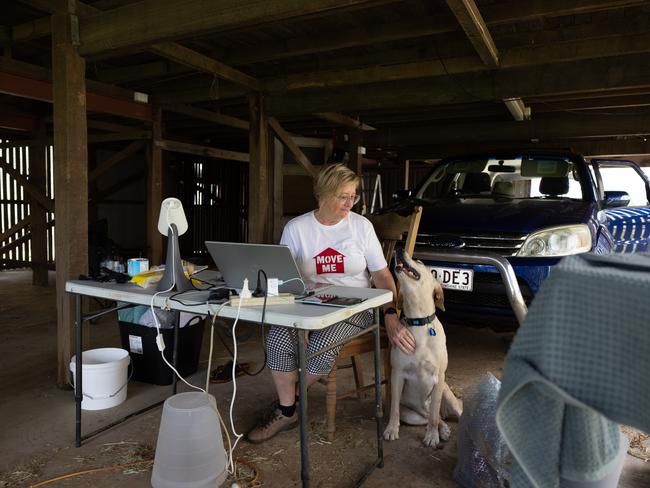
“I cannot live in the house so I have to sleep in the car,” she said through tears. “Talking about it is still pretty tough.”
Julia would like to move her entire house to a new location but while she battles to do so she could have been living in an emergency pod. “I haven’t been offered anything,” she said.” It’s been inertia, totally shambolic.”
The emergency housing pods, costing up to $170,000 each, were meant to be a quick fix to provide flood victims with temporary housing. But the roll out has been slow with local residents opposing their construction on ovals and public land.
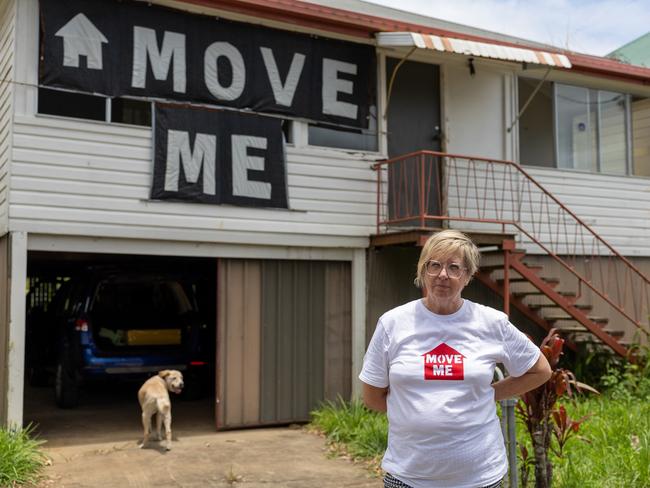
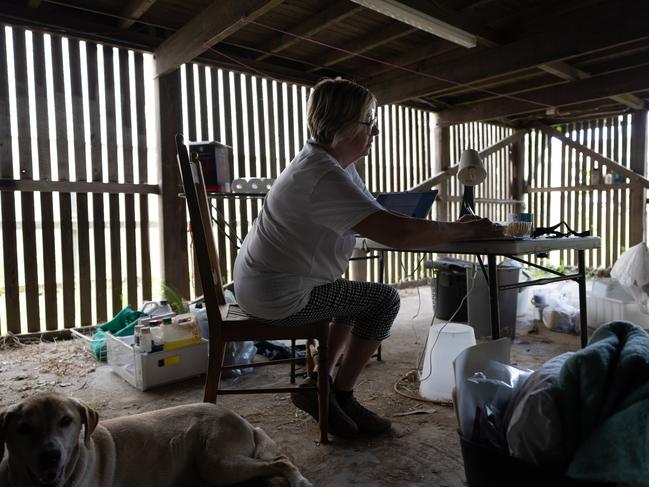
A site with 52 self-contained pods that can house 200 people only opened on land at Southern Cross University in Lismore last month – nine months after the floods hit. There are other sites at Coraki, Evans Head, Kingscliff, Pottsville, Wardell and Wollongbar. Four more are under construction.
Lismore MP Janelle Saffin said it was unclear how many more pods had been built and were waiting for a location to put them on.
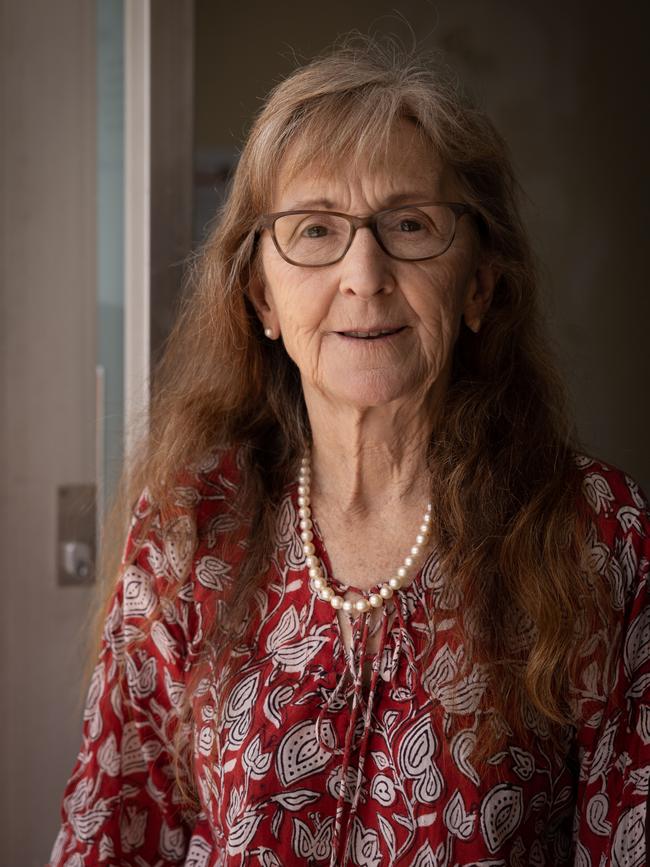
“We are at Christmas and there are still people in motels, sleeping in their cars or under their houses,” she said.
“It could have been managed better. No one knows what is being spent. It is awful and quite heartbreaking.”
Ms Saffin, who is still working out of a temporary office because hers was damaged in the floods, said rather than leaving 10 pods empty on the side of the road it would have been better to put them on private land so people could use them.
“They have said people will be in the pods for a couple of years. It might have been better to do modular homes in the beginning and let people buy them in the future,” she said. “That would have helped address the shortage of 18,600 homes.”

Gray Wilson, part time NDIS worker, and partner Lisa Walmsley were due to move into their new home in Brewster Street the day after the floods hit. They desperately want one of the temporary pod homes.
“At first I was a bit worried about the idea of a pod but I quickly came to the point of thinking that I would take anything,” he said.
“I was waiting for someone to contact me but I never heard back. I think because the house has walls and a roof even if the doors don’t lock I am in a better position than others.”
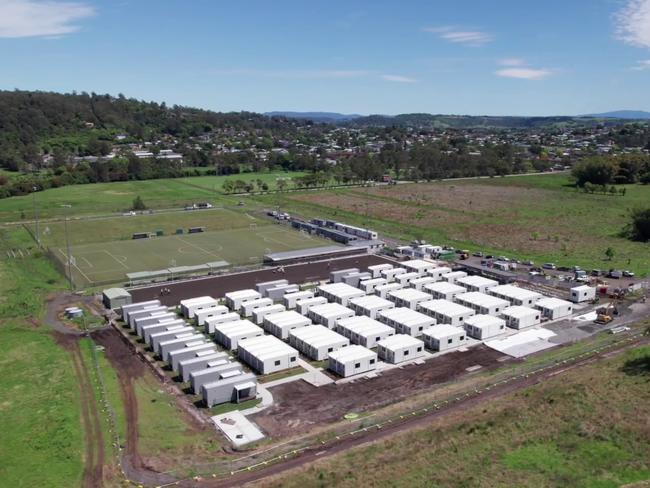
Michael Were, general manager of Lifeline Northern NSW, said the uncertainty was taking a massive mental toll on people in the community.
“Calls to Lifeline doubled after the flood,” he said. But even temporary pod communities were not an ideal answer. “The problem with the housing after the floods is that it takes people away from their community, their identity,” he said.
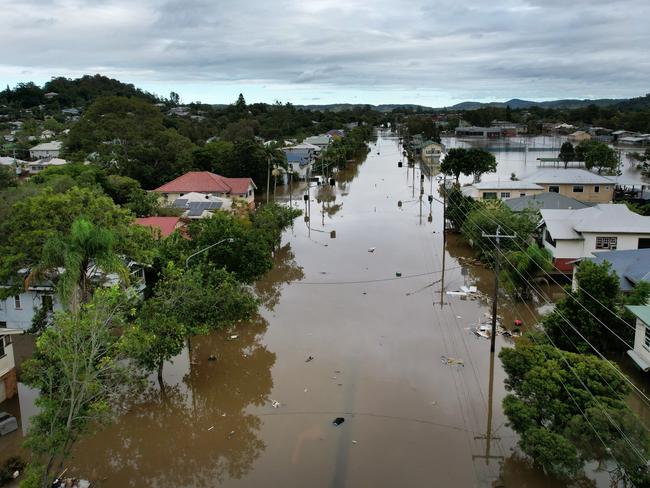
Resilience NSW boss Shane Fitzsimmons has been axed and the agency abolished after a damning report by former police commissioner Mick Fuller and Professor Mary O’Kane recommended a “leaner” agency should respond to state emergencies in future.
A NSW Government spokeswoman confirmed there were 765 people in emergency accommodation in Northern NSW, including in motorhomes and motels, despite $350 million being spent on “medium term accommodation”.
“The rollout of this housing program has faced challenges, particularly the persistent wet weather which has hampered construction. Despite this, we have seven temporary housing sites currently operational across the Northern Rivers region providing safe and secure homes,” she said.
The spokeswoman said 546 temporary housing units across 11 sites would eventually have the capacity to house more than 1,800 people.
Despite the floods happening 10 months ago the emergency accommodation was still under construction in the Ballina, Brunswick Heads, Evans Head and Mullumbimby temporary housing sites.
Meanwhile the spokeswoman said negotiations were continuing with Lismore City Council “to establish temporary housing sites on the limited land that isn’t at significant risk of future flooding and two locations, Hepburn Park and Clifford Park, have been put forward to Council on three occasions for consideration but have been rejected by councillors.”





